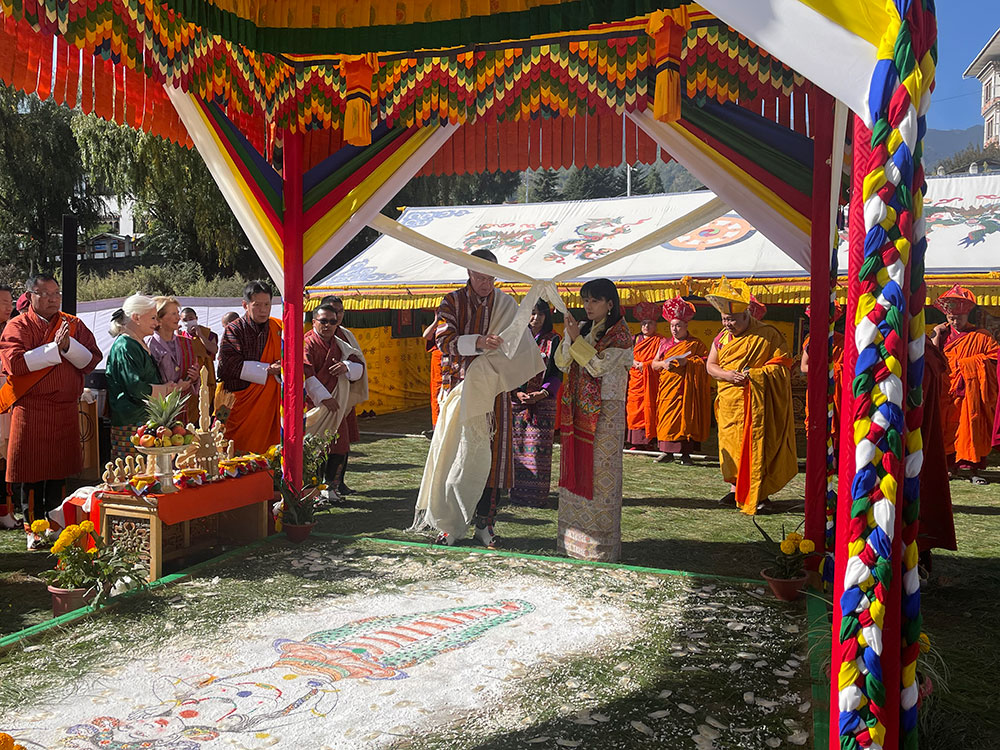Sherab Lhamo
Her Majesty the Gyalyum Sangay Choden Wangchuck, the Royal Patron of the Royal Textile Academy of Bhutan (RTA) attended the salhang tendrel (ground breaking) ceremony of the final phase of its Cultural Heritage Centre yesterday.
Her Majesty said, “The fourth and final phase is not just a structure to me, it is a testament to our unwavering commitment to culture.”
Her Majesty said that the inauguration represented the significant milestone achieved through years of unwavering dedication and hard work.
The phase four construction represents a significant milestone in RTA’s commitment to expanding its infrastructure, enhancing educational opportunities, preserving Bhutan’s cultural legacy, impacting the community and the nation, and celebrating the perpetual spirit of textile heritage in the country, according to RTA’s press release.
The design of RTA premises was conceived around the symbolic story of the four friends and the last phase symbolised the elephant, RTA Director Ugyen Tenzin said.
The first phase of the RTA construction project was the Textile Museum, the Weaving and Conservation Centre was the second phase, and the third phase was the three-storey office building.
The museum opened an exhibition allowing visitors to immerse themselves in the intricate beauty of Bhutanese textile artistry. It will be on display for two months starting November 6.
The exhibition displayed eight designers from various dzongkhags designing products, showcasing the connection between culture, ecology and the world of textiles.
The RTA also hosted a fashion show showcasing the collaborative effort of the weaving and dyeing workshop, which took place in October in Khoma, Lhuentse.
The workshop was an integral component of the “Inspired by Birds and Butterflies of Bhutan” Textile and Tourism Promotion Project, a collaboration between the RTA and the Department of Tourism (DoT), supported by the GEF Ecotourism Project, according to the press release.
Dhechen Chodron,30, who runs Dechen’s Atelierin Changzamtog said she could go to Khoma to learn about the dyeing process for two weeks.
After the training, the eight designers came to Thimphu, RTA and dyed the weave threads themselves. After that, they started gathering materials and designing their products.
The creations featured at the exhibition and the fashion show formed the centrepiece, displaying beautifully blended Bhutanese textile designs and connecting cultural heritage, ecological conservation, and global textile appreciation.
The eight designers participated in the exhibition and the fashion show, contributing to the diverse range of creativity on the runway. Among those eight, two were from the community, adding a distinctive and inclusive dimension to the project.
Domchoe Dema, a 30-year-old weaver from Radhi, Trashigang, received an invitation from Kezang, a dye expert, to participate in learning and showcasing opportunities from RTA.
The combined events celebrate Bhutan’s creative spirit and the means to raise awareness of the importance of preserving cultural heritage, empowering textile designers, and protecting the endangered species that inspire this artistic endeavour, according to the press release.
The event was attended by the RTA’s board members, donors, and other guests.


